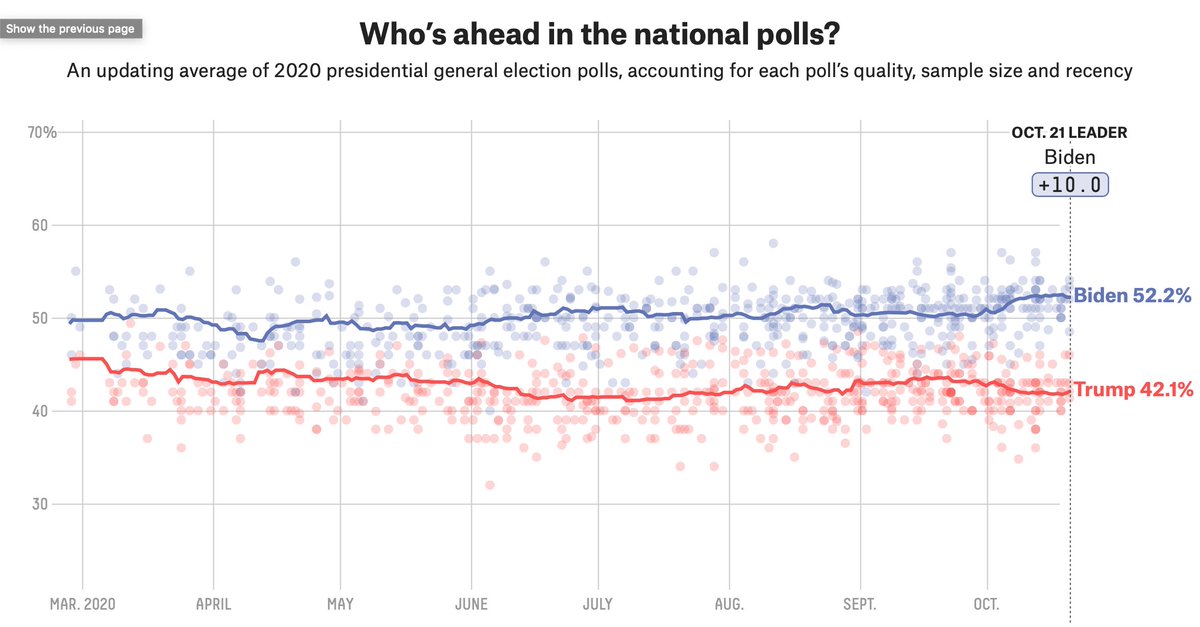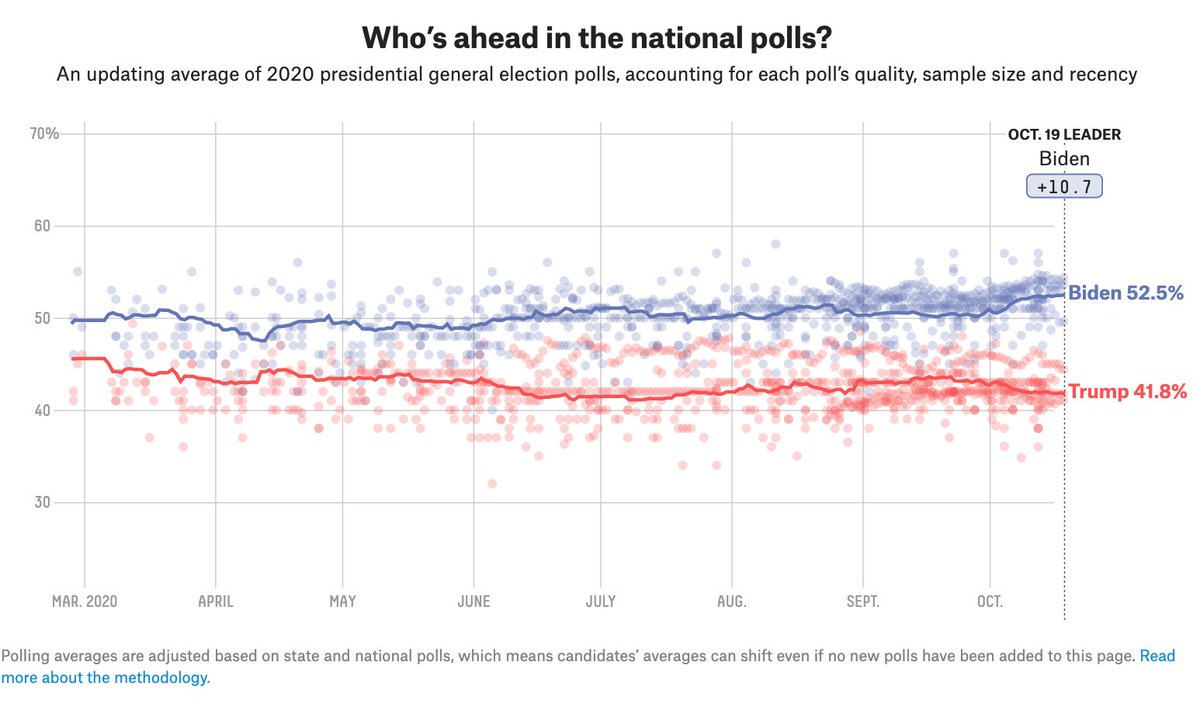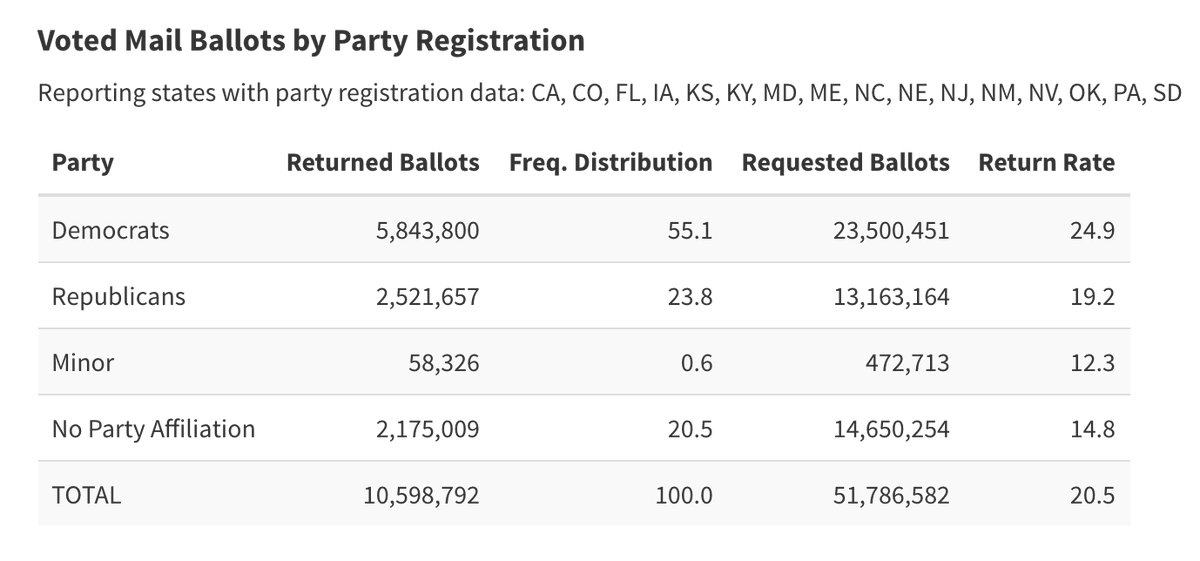
The thing is that Trump has very little leverage here. He needs the debate a lot more than Biden does.
https://twitter.com/BillStepien/status/1318269143884435456
Unless Stepien thinks Trump would be so bad that debating would lower his comeback odds, even though Trump generally wants high-variance strategies.
It's not crazy: Trump historically loses ground following debates and his messaging has been even more erratic than usual lately.
It's not crazy: Trump historically loses ground following debates and his messaging has been even more erratic than usual lately.
Like, if this is what's coming out of Trump these days, it's not clear that Stepien wants him debating, especially if he could also impact downballot races.
https://twitter.com/ddale8/status/1318283628409987072
Pretty good chance of a cancellation now I'd think.
https://twitter.com/MikeBalsamo1/status/1318337004220915713?s=19
• • •
Missing some Tweet in this thread? You can try to
force a refresh








